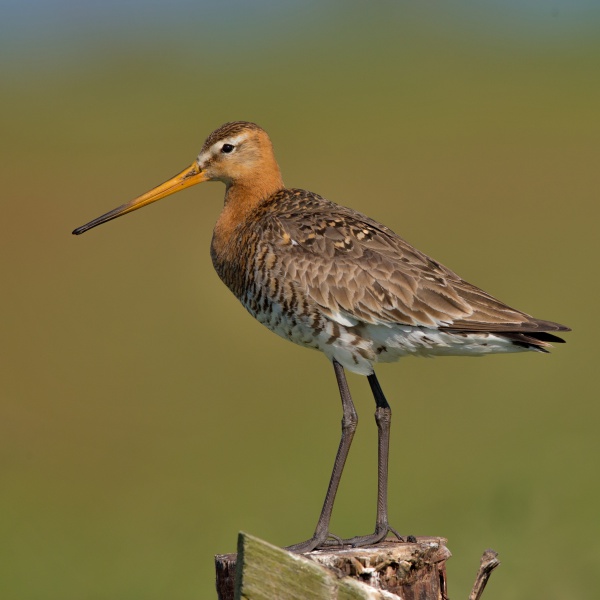Facts About Black-tailed godwit
The black-tailed godwit is a striking large shorebird from the Limosa genus, renowned for its vibrant orange breeding plumage and more subdued grey-brown coloring in winter. There are three subspecies of this bird, which breed across Europe and Asia. As winter approaches, these birds migrate to regions such as the Indian Subcontinent, Australia, and Africa. They thrive in habitats such as fens, meadows, and estuaries. With a global population estimated between 634,000 and 805,000, the black-tailed godwit is currently classified as Near Threatened. It also holds the distinction of being the national bird of the Netherlands.
This bird was first described by the eminent scientist Carl Linnaeus in 1758. It belongs to the Scolopacidae family within the Charadriiformes order. The three subspecies include the European, Icelandic, and Asian black-tailed godwits. These birds are easily recognized by their long bills, legs, necks, and distinctive calls, which sound like "weeka weeka weeka."
Black-tailed godwits have a wide breeding range, from Iceland to Russia, preferring river valleys and wetlands. In spring, they feed in grasslands, and after breeding, they move to estuaries. Some populations even migrate to different continents. Unfortunately, their numbers are declining, putting them at risk.
Behaviorally, black-tailed godwits are primarily monogamous and tend to nest in colonies, fiercely defending their territories during the breeding season. Their diet mainly consists of invertebrates, but it can vary depending on the season. Historically, they were hunted in France and considered a delicacy in England.
The black-tailed godwit holds cultural significance in various regions, with different names and stories highlighting their unique characteristics and behaviors.

 Germany
Germany